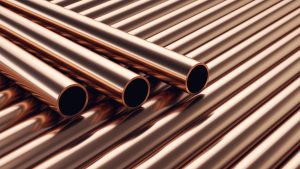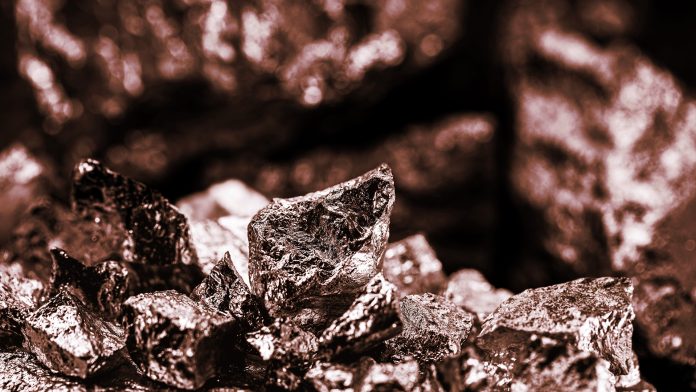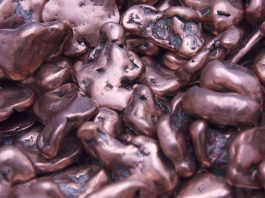Highland Copper is uniquely positioned to take advantage of the widely expected copper cycle. The company has structured its business to proactively advance its two scalable, US-based copper projects to boost supply.
Quite simply, demand for copper is far outstripping projected supply.
Traditional sources of demand, like construction and transportation, remain strong, while new sources of demand, like electric vehicle batteries, wind, and solar, have emerged, further driving demand.
The right time for copper production
Copper is at the forefront of metals needed for use in green technologies. As the most efficient and affordable electrical conductor, it is the perfect material for electric car infrastructure and charging stations. While conventional vehicles contain some copper, hybrid electric and battery-powered cars require three times more than internal combustion engine vehicles.
Key economies worldwide are adopting clean energy initiatives, continuing to drive demand. Increased environmental legislation worldwide, combined with ambitious targets set by car producers and consumers alike, is seeing demand for copper soar. The ongoing focus on Environmental, Social and Governance (ESG) and zero emissions should see the demand continue.
At the same time, copper supply is reducing. Existing deposits are being depleted faster than new mines can come onstream. Lower grades are being mined at increasingly expensive costs. Over the last decade, the industry has suffered from a lack of exploration investment.
A fundamental imbalance between supply and demand leads to a squeeze on global copper inventories. Only by developing the next generation of copper mines can the industry meet today’s demand, let alone the demand in the future.
Copper supply in the US: The right place for production
The US, and particularly Michigan, are critical to Highland’s success. The copper supply deficit is even more pronounced in the US. This triggered the US Department of Energy to designate copper as a Critical Material in 2023. Domestic copper supply in the US will reduce reliance on imports, which have become more challenging as geopolitics change.
Michigan specifically focuses on electrification and mobilisation to support the electric vehicle industry in-state. With its strong industrial history, Michigan is focused on retaining and attracting new businesses, particularly ones that will bring jobs to local economies. Highland Copper recently announced that it is in consideration for a $50m grant from the State of Michigan. This highlights the priority that Michigan is placing on electrification.
Regionally, Highland Copper is welcome in the Western Upper Peninsula with formal support letters received from all key municipalities, townships, and counties. The Upper Peninsula has a rich history of mining, and the Copperwood project has the capacity to revitalise the area significantly.

Michigan also has a stringent, but fair process for permitting mines. Highland copper has already received its permits for the first of its two projects, Copperwood. Along with their joint venture partner, the permitting process is underway for its second project, the past-producing White Pine project.
Producing copper in the right way
Highland Copper is permitted and welcome in Michigan because it has designed its project in an environmentally friendly manner.
Copperwood is designed as an underground mine, meaning it is expected to have a modest surface footprint compared to open pit mines. The process plant will be an enclosed building, further considering light and noise emissions.
Highland Copper has elected not to draw water from Lake Superior. The process water solution was redesigned as part of the 2023 Feasibility Study to accumulate precipitation and spring run-off for the process plant. As a result, Copperwood will not need to draw water from Lake Superior.
Highland is setting up a wetland preservation area of 717 acres, which will be protected in perpetuity. This preserved area outweighs the wetland impacted during construction many times over, and is larger than the total surface footprint of the project.
Water that comes into contact with the mine will be treated by reverse osmosis through a water treatment plant, ensuring it is clean when returned to the freshwater supply. Monitoring by both Highland and the State will continue throughout operations and for a significant period after closure.
The company has placed financial assurance with the State of Michigan to assist with any needed remediation. Critically, all site work completed in 2023 was done with no environmental incidents or safety accidents.
Importantly, the construction of Highland’s projects will support the green energy transition and US resource independence while also generating a significant economic boost for the local Michigan economy. It is estimated that there will be 300 jobs created during construction and 380 while in operation, in addition to the indirect benefits of having a mine in the region.
Highland Copper takes its environmental and local community commitments seriously.
Structured to succeed
Mining is a capital-intensive business and requires investment from multiple sources. Highland Copper’s key shareholders include major mining investment funds and private equities, who have supported the company through the exploration, resource definition, and technical studies phases of both Copperwood and White Pine projects.
The 100% owned and fully permitted Copperwood project is Highland’s priority. Copperwood has completed a 2023 Feasibility Study reflecting an initial 11-year mine life projected to produce 67 million pounds of copper annually. There is considerable opportunity to increase the mine life by converting the significant inferred resource base.
The project can potentially be a near-term producer and aid in the growing US copper supply deficit. Along with the potential state funding, Highland is well capitalised to progress Copperwood and advance to a construction decision. It has started early-site preparation work and is undergoing trade-off studies to improve the economics further.

During 2023, Highland put a joint venture in place for its second asset, the White Pine project. White Pine also has a current 2023 Preliminary Economic Assessment reflecting a 22-year mine life projected to produce 90 million pounds of copper annually.
A large battery metal private equity firm, Kinterra Copper acquired 66% of the project in July 2023. Given the scale and longer-dated nature of the project, Kinterra is well-placed to advance White Pine. With their considerable technical and financial capacity, they have put a strong team in place and are currently drilling White Pine in anticipation of preparing a Feasibility Study. Simultaneously, they are initiating environmental baselining as they prepare to enter the permitting process.
Highland’s potential to be a key supply source of copper in the US
If built in sequence, Copperwood and White Pine can potentially be a key supply source to the US and Michigan. In a perfect scenario, the copper produced in Michigan would feed directly into the electric vehicles produced by GM and Ford.
Resource independence is critical to the US, and there is a strong case to be made that projects like Copperwood and White Pine simply need to be built.
Please note, this article will also appear in the seventeenth edition of our quarterly publication.









